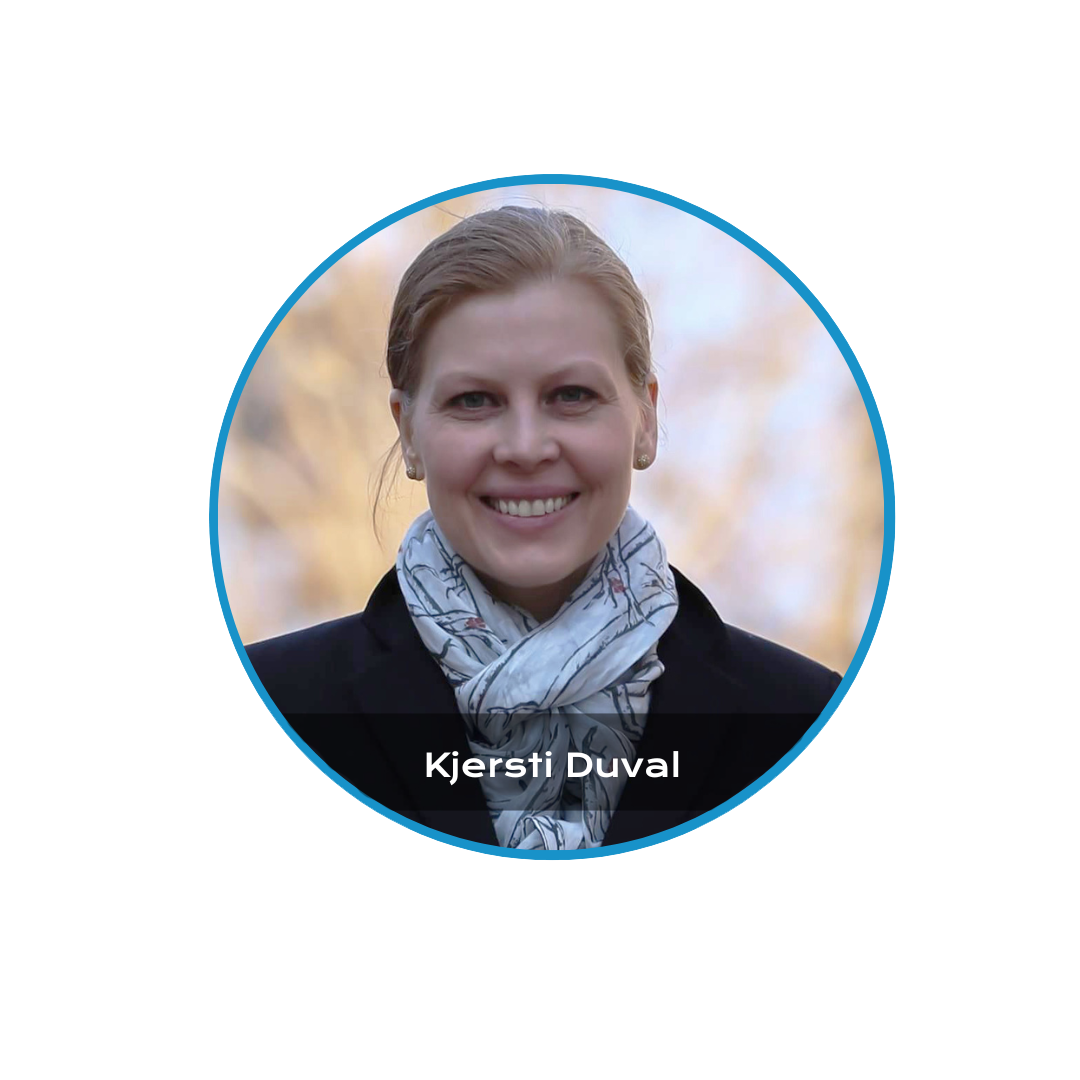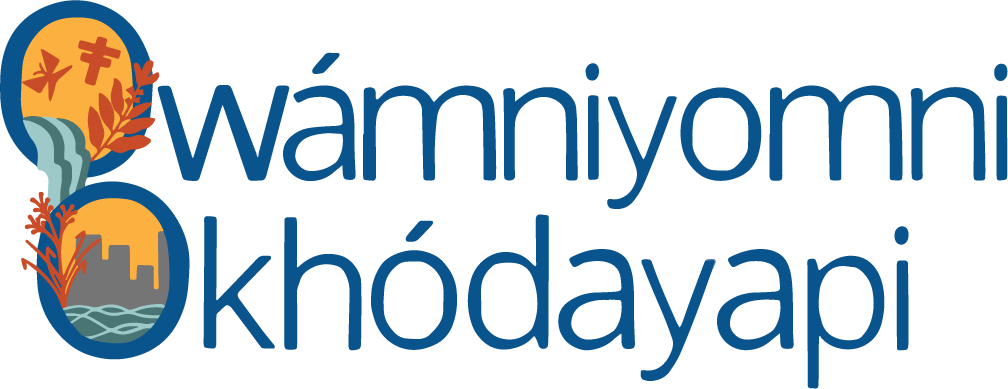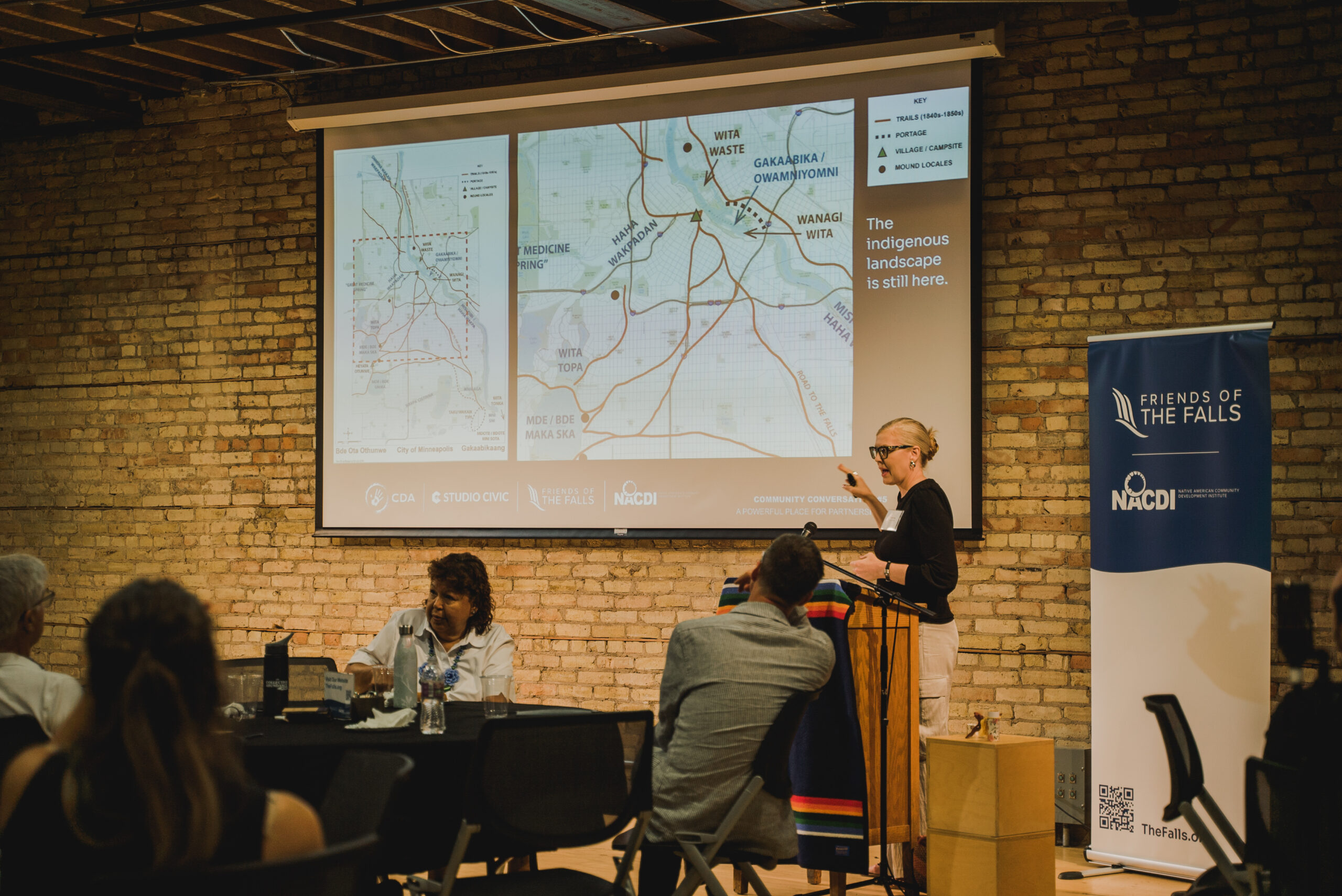By Owámniyomni Okhódayapi | March, 30 2023
Kjersti Duval has been a part of The Falls Initiative since its early days and currently serves as our project director. In addition, Kjersti is the CEO of Duval Companies and the founder of Studio Civic, which supports the unique development management and engagement needs of public interest projects and public-private partnerships. Kjersti is committed to innovative planning & design methods that authentically engage audiences, implement iconic urban development, and enable creative place-making.

Q: Can you describe the guiding principles that drove these designs?
A: The design process was guided by principles defined by the Native Partnership Council. At the heart of it was the understanding that water is life, and that the River wants to nurture all of her children: the animals, the fish, the people, the plants, the sky and the water. Concepts of natural and cultural restoration, as well as learning, healing, and gathering, became important principles.
Q: What are some examples of how these principles were applied to the designs?
A: The design team was led by landscape architects (GGN), who embraced these principles. An indigenous landscape is restored, with plants that are good for people as well as the many other relatives who depend on them. There is water restored to the site which restores flow the old Mill Race channel, bringing that stagnant dead water back to life in a way that mussels and turtles and fish could inhabit. The site creates a path to the River, where people can see and touch the water and learn about Spirit Island, now gone, which was a place where Dakota women went to give birth because of its close proximity to Owámniyomni and the spirit world. In all aspects, the design works to bring life back to this place, and to provide learning and gathering opportunities in its midst.
Q: It’s been mentioned that this will be a place of healing, restoration, and learning. In what ways can those be seen in the early designs?
A: The early design contemplates a welcome center (building design by VJAA) as well as outdoor gathering places (landscape design by GGN) that can sustain programming and activities. The design could support everything from actual classes to learn traditional skills, to meetings and events, to exhibitions, to a site walk to get to know your plant relatives. Places were designed with different characteristics guiding them, from the bustling welcome center near Owánmi at the pedestrian hub of the entire Central Riverfront, to the quiet clearing at the shoreline, a place of reverence whose primary sounds would be wind, water and birds, looking out at the absence of Spirit Island. The designers wove in places that could support a wide variety of individual or programmed activities and experiences.
Q: Why has Friends of the Falls and GGN placed such importance on having Indigenous voices lead the design process?
A: Owámniyomni (St. Anthony Falls) is the reason there is a designated historic district at this place on the Central Riverfront. The 50-foot cascade attracted settlers and industrialists, who engineered the River to drive sawmills, flour mills, generate power, and grow a city. From that time until now, the the people who were here first, the Dakota people, and other indigenous nations of Mni Sota (Minnesota) were actively and aggressively displaced, often killed, and institutionally erased. Despite everything, the culture survived. The Native nations of Minnesota are still here. These things happened before any of us were born, but they have sustained impacts to the communities they disrupted. For the first time, in our historic district, a full history will be encountered. The vibrant and living culture of the Dakota people, and an understanding of the broader landscape of Native Nations in Minnesota, will cease to be invisible. There is so much to learn. And not only about the past, but about how we move into the future. To do this would be impossible without Native voices in the lead.
Q: How has the feedback from non-indigenous Minneapolis residents been represented in these designs?
A: This place is at the very heart of the Central Riverfront in downtown Minneapolis, at one of the most visited places in all of the Mississippi National River and Recreation Area (MRNNA). As you can imagine, it has a wide array of stakeholders from parks lovers to tourism interests to residents to downtown business interests. Over years of engagement for this project, all of these groups have played an important role. The idea of adding this incredible experience and all that it has to offer to our downtown, to our Central Riverfront, and to our community, has been exciting across all stakeholder groups. We have seen levels of support for this work that are rare in projects with this much prominence and this many potentially competing interests. It’s wonderful that it has been so well received!
Q: How final are these designs?
A: The designs are not final, but serve as early design ideas that successfully capture some of the most important principles and values of the first season of work with the Native Partnership Council. The second season of work centers Dakota nations in a discussion about the future of this place, its ownership, and its ongoing stewardship. The City of Minneapolis, the Minneapolis Park Board, and Friends of the Falls leadership are actively meeting with the Dakota nations as they consider the role they wish to play. Friends of the Falls is committed to that process, and stands ready to serve as the resource and fundraising organization to support next steps.
Q: What does the timeline look like for this project moving forward?
A: The site is still federally owned. We anticipate conveyance to the City of Minneapolis from the federal government at the end of 2023. Design and fundraising will take us to a best-estimate construction window in 2026 or 2027. We’d like to coordinate the implementation of this project with the construction of Water Works Phase 2, as these two projects will ultimately be experienced as one seamless place.
Q: How do you see these designs evolving over time?
A: There are many variables that could impact the specific design, so I wouldn’t want to speculate on the specifics of design development now. Our team’s unified focus right now is to support the process, to work with the City, Park Board and U.S. Army Corps to successfully convey the property from federal to local ownership, and to listen to the tribes as next steps take shape.



